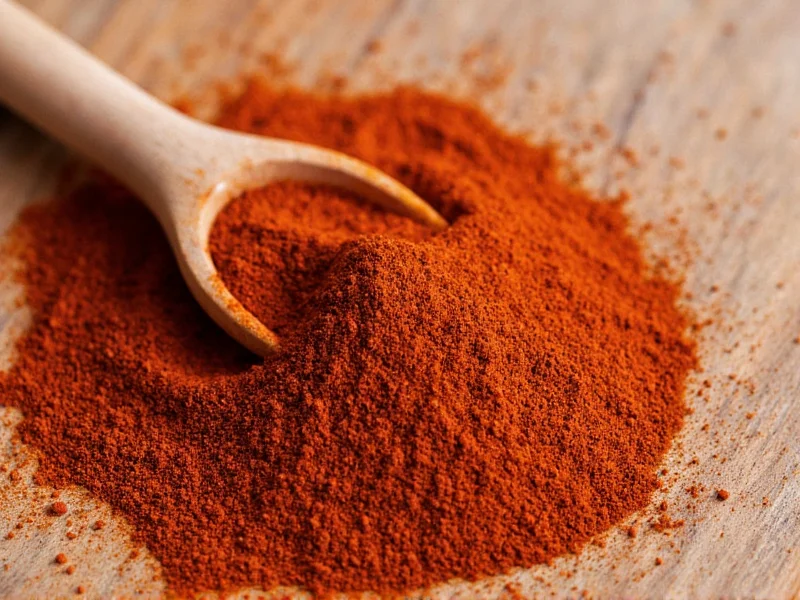Understanding the precise spice level of chipotle peppers is essential for home cooks and culinary professionals alike. These smoked and dried jalapeños bring a distinctive heat profile that differs significantly from their fresh counterparts. While fresh jalapeños range from 2,500-8,000 SHU, the smoking process that creates chipotles doesn't inherently increase their heat—it concentrates flavors while maintaining similar Scoville measurements.
What Exactly Is a Chipotle Pepper?
A chipotle pepper is a smoke-dried ripe jalapeño. The name comes from the Nahuatl word “chilpoctli,” meaning “smoked chili.” This transformation process gives chipotles their characteristic deep reddish-brown color, wrinkled texture, and complex flavor profile that combines smokiness with moderate heat.
Chipotle Pepper Heat Level Explained
The Scoville scale measures capsaicin concentration, the compound responsible for chili heat. Chipotles maintain the same fundamental heat range as fresh jalapeños (2,500-8,000 SHU) but deliver it with different intensity due to moisture loss during smoking. When rehydrated or used in sauces, their heat becomes more pronounced as the capsaicin concentrates.
| Pepper Type | Scoville Heat Units (SHU) | Heat Comparison |
|---|---|---|
| Chipotle Pepper | 2,500-8,000 | Medium heat, smoky flavor |
| Jalapeño (fresh) | 2,500-8,000 | Grassy, brighter heat |
| Poblano | 1,000-2,000 | Much milder than chipotle |
| Cayenne | 30,000-50,000 | Significantly hotter than chipotle |
| Habanero | 100,000-350,000 | Extremely hotter than chipotle |
Factors That Influence Chipotle Heat Perception
Several elements affect how hot chipotle peppers taste in practice:
- Preparation method: Chipotles in adobo sauce often taste milder initially due to the vinegar and tomato base, though the heat builds over time
- Seed and membrane content: Removing seeds and white membranes reduces heat significantly
- Age of peppers: Older dried chipotles may lose some potency
- Individual tolerance: Personal heat sensitivity varies dramatically
- Food pairing: Dairy and fats help counteract capsaicin's effects
Chipotle Pepper Variations and Their Heat Levels
Different chipotle preparations deliver varying heat experiences:
Chipotle Peppers in Adobo Sauce
These canned peppers typically measure between 3,000-6,000 SHU. The adobo sauce (made from tomatoes, vinegar, garlic, and spices) tempers the initial heat while allowing the smoky flavor to shine. Many cooks mistakenly believe these are hotter than they actually are because the heat builds gradually.
Chipotle Powder
Chipotle powder usually registers at 5,000-8,000 SHU—toward the higher end of the chipotle range. The drying and grinding process concentrates the capsaicin, making it noticeably hotter than whole chipotles by volume. When substituting chipotle powder for whole peppers, use approximately 1/2 teaspoon powder for each whole pepper.
Smoked Chipotle Flakes
These provide similar heat to powder but with texture variation. The flakes contain both flesh and seeds, creating pockets of more intense heat. They typically measure 4,000-7,000 SHU.
Practical Cooking Applications Based on Heat Level
Understanding chipotle pepper spice level helps determine appropriate usage:
- For mild heat: Use 1/2 to 1 whole chipotle pepper per recipe serving 4-6 people
- For medium heat: Use 1-2 whole peppers or 1-2 teaspoons of adobo sauce
- For pronounced heat: Use 2-3 whole peppers or 1-2 teaspoons chipotle powder
When working with chipotles, always start with less than you think you need—you can add more heat, but you can't remove it once incorporated. Remember that chipotle heat builds gradually, unlike the immediate punch of fresh chilies.
Common Misconceptions About Chipotle Heat
Several myths persist about chipotle pepper spice levels:
- Myth: Smoking jalapeños makes them hotter
Fact: Smoking preserves existing heat but doesn't increase Scoville units - Myth: All chipotles in adobo sauce are extremely hot
Fact: The sauce base actually tempers initial heat perception - Myth: Chipotle powder is always hotter than whole peppers
Fact: While generally true, some whole peppers may be hotter depending on growing conditions
Managing Chipotle Heat in Recipes
When incorporating chipotle peppers into dishes, consider these techniques:
- Remove seeds and inner membranes for milder flavor
- Soak dried chipotles in warm liquid before use to rehydrate and slightly reduce heat
- Balance heat with dairy (yogurt, sour cream, cheese) or acidic components (lime juice, vinegar)
- Use chipotle sparingly in sweet applications like chocolate mole to create complex flavor layers
- Always taste as you go—chipotle heat builds over time during cooking
Conclusion: Understanding Chipotle Pepper Heat
Chipotle peppers offer a distinctive medium heat level (2,500-8,000 SHU) that provides culinary versatility. Their smoky depth combined with manageable heat makes them accessible to most palates while still delivering authentic flavor. Whether using whole peppers, powder, or adobo sauce, understanding their precise spice level helps create balanced dishes that showcase chipotle's unique characteristics without overwhelming other flavors. Remember that individual pepper heat can vary, so always adjust quantities based on your specific batch and personal tolerance.











 浙公网安备
33010002000092号
浙公网安备
33010002000092号 浙B2-20120091-4
浙B2-20120091-4